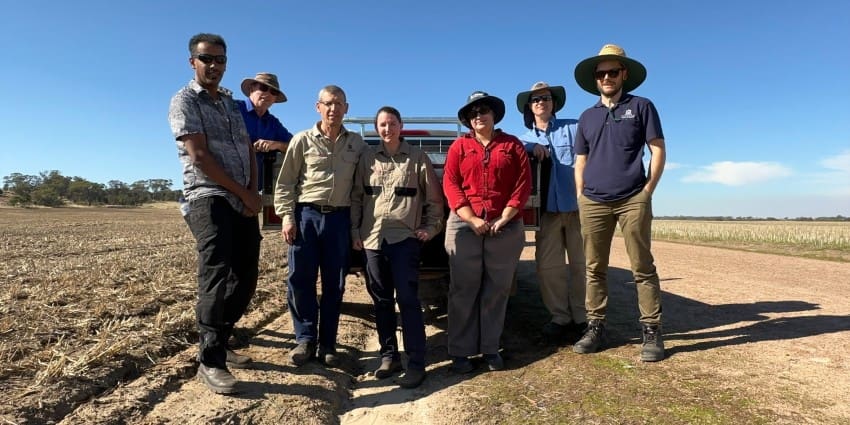
A team from DPIRD is researching ways to help protect crops from frost. Photo: DPIRD
THE POSSIBILITY of reducing the risk of frost impacting grain crops by treating plants with protective applications has moved a step closer thanks to research led by Western Australia’s Department of Primary Industries and Regional Development.
Made possible with investment from the Grains Research and Development Corporation, the research has produced promising results.
The work is part of a broader national project, led by Field Applied Research Australia, that is working to test in-season agronomic strategies for managing and mitigating frost risk.
The findings, profiled at the GRDC 2024 Grains Research Update in Perth, revealed some potential products that could be used to mitigate frost caused by Ice Nucleating Bacteria (INB) found on stubble and older leaves.
Laboratory trials in a controlled environment showed copper and zinc oxides, as well as potassium soap and silicate, acted as antimicrobials and reduced frost damage threefold on maize leaves.
Maize was used for this trial because it shows visible frost damage symptoms on individual leaves within just two days, allowing more precise count data to be collected.
Field trials found that copper and zinc oxides, as well as K-soap, reduced the freezing temperature of older wheat and barley leaves.
DPIRD research scientist Amanuel Bekuma said while the trials were encouraging, more research was required.
“The field results indicated the copper and zinc oxides and the K-soap lowered the freezing temperature of older leaves in wheat and barley by 0.8C to 4C in most samples,” Dr Bekuma said.
“However, this effect was observed on older leaf samples collected from the lower plant canopy within two days of treatment.
“The reduction in the freezing point of older leaves suggests these products have the potential to mitigate floret sterility and improve yields.
“Future research to refine the frequency, dosage, timing and combination of product applications will be explored in the upcoming season.
“We will also examine the relationship between frost damage in grain crops and INB population in older leaves to establish threshold populations of INB that increase the risk of damage in plants.”
DPIRD analysis shows the number of nights below 2C, when frost damage is likely to occur, has increased from four between 1975 and 1999 to six between 2000 and 2023, across the South West Land Division.
Widespread frost damage can significantly impact WA’s grain crop, and cost the industry an estimated $1.25 billion in 2016 and $740 million in 2019.
GRDC sustainable cropping systems manager – west Uys Lourens said GRDC continued to tackle the complex issue of frost damage on behalf of Australian growers by investing in research, development and extension.
“This work contributes to minimising the direct impact on grain yield and on-farm profitability caused by frost damage across a significant proportion of Australia’s grain growing regions,” Dr Lourens said.
Source: DPIRD

HAVE YOUR SAY